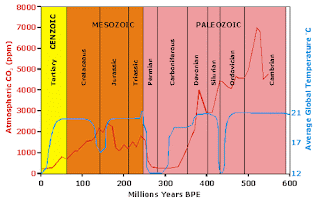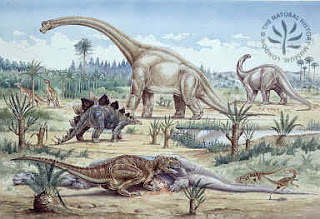A natural regulation system there is a basic relationship between the photo synthesis of green
plants and the respiration of living beings. This relation ship not only
maintains forest life but it also preserves the biosphere.
Monday, October 28, 2013
SOIL
Soil is made up of broken bits of rock , minerals plants and animals. It covers most soil ground in the world. It takes thousands of years for bigger pieces of rock minerals and rotted plants and animals to from the small particles that make up the soil.
Fossil
Fossil
one formed from the remains of dead animals or plants. Looking at fossil tells
us about animals and plants that lived a long time ago.
Forest
Food chain
Comet
EARTH
The Earth is our planet. IT is one of nine planets that move through space around the sun. The Earths takes one year to travel once around the sun. It is just the right distance from the sun to be worm enough for people , animals and plants to live on but not so not that all water dries up.
Distance aroun the
The equator …………………… 40,075 Km
Distance from the
Surface to the centure………….... 6,300 Km
Temperature in the
Earth’s core……………………. 4300 C
Distance of the Earth
From the sun…………………… 149.5 million Km
Wednesday, October 23, 2013
ANIMALS
Aardvark.
An aardvark is an insect-eating mammal which lives in African . Its name means ' earth pig ' in the dutch language .
Aardvark facts.

Of kinds - 1
Color - beige-grey
Length - 1.5-1.9 m
Height - about 50 cm
Status - common
Life spar- 10 years
Enemies - dogs , pythons , lions , leopards , warthogs.
Alligator.
The alligator is a very big reptile that lives in rivers , lakes and swamps . It is a close relative of the crocodile . On type live in south-east USA , while the other lives in south -east Chaina . The alligators snout is less pointed than the crocodiles and the teeth are different .
Alligator facts

Of kinds - 2
Color - greyish-brown
Length - up to 4 m
Weight - up to 250 kg
Status - threatened
Life span - up to 60 years
Bat
Bat are the only mammals that can fly . Most bats fly at night . they avoid crashing into things by making high noises that bounce off objects to give echoes . The echoes help bats to find their ways of the world except the arctic and Antarctica .
Bat facts.

Of kinds - more than 2000
Color - black , brown , grey or yellow .
Wingspan - usually 20-30 cm .
Weight - usually 5-40 g .
Status - common .
Life span - 15-25 years .
Enemies - cats , owls , fores , skunks , snakes .
Bear
Bears are very strong and powerful mammals . Bears live over most of the northern hemisphere . The biggest bear. the smallest is the sun bear.
Bear facts .
Of kinds - 7
Color - black , brown , red , bluish , white or cream
Length - 1.3-3 m
Wingspan - 90 cm to 1.5 m
Weight - 50-65 kg
Status - some are threatened
Life span - 25 years
Enemies - people hunt bears for their fur.
Tiger
Tigers are mammals . They are the longest and strongest members in Asia.
Tiger facts
Of kinds - 8
 Color - golden , orange , with black stripes
Color - golden , orange , with black stripes Length - up to 3 m
Weight - up to 270 kg
Status - endangered
Life span - 15-40 or years
Enemies - peoples
Owl
The owl is a bird of prey which hunts of night. there are many different kinds of owl that live all over the world.
 Owl facts.
Owl facts.Of kinds - 133
Color - usually brown or brown and white
Length - up to 72 cm
Weight - up to 800 g
Status - common
Life span - up to 18 years
Enemies - eagles , buzzards , peoples
Ant
An ant is a small insect. it lives with other ants in a group called a colony. Some colonies have just a few ants but other colonies have thousand of ants. Ants live in all but the coldest parts of the earth.
 Tiger facts
Tiger factsOf kinds - over 10,000
Color - black , brown or red
Length - 0.1-2.5 cm
Status - common
Life span - from a few weeks to 20 years
Enemies - anteaters , birds , frogs , lizards , spiders , other insects , peoples
.jpg)
Monday, October 21, 2013
river fish
the movement of fish.
in order to better service in the water , fish respond to different stimuli . the response to light ,for example , is very important for fish . some respond negatively , that is , they avoid light and remain at the bottom of the river . the fish called miller's-thumb lays it's eggs beneath rocks and submerged tree trunks and the males watch over them until the eggs are hatched.
SRI LANKA RIVER FISH
Sunday, October 20, 2013
ACID RAIN
acid substances.
When rain water has a degree of acidity lower than 5 , it is acid ; this means that is contains some dissolved acid substance , generally sulphuric and and nitric acid such acids from gases produced by power stations , industries and motor vehicles.
Once they are formed , sulphuric and nitric acid return to the earth's surface through rain , fog and snow , or simply by bonding to solid particles that fall to the ground.
acid rain transmits its acidity to rivers , oceans and lakes , to villages and cities , to fields and forests such acidity impoverishes the nutritional capacity of the soil as it alters the population of microorganisms . Forests and subjected to the effects of acidity as well , be cause the rain and low clouds in acid particles.
Sunday, October 6, 2013
Subscribe to:
Comments (Atom)
.jpg)
.jpg)
.jpg)
.jpg)
.jpg)

.jpg)
.jpg)
.jpg)
.jpg)
.jpg)
.jpg)
.jpg)
.jpg)







.jpg)
.jpg)
.jpg)
.jpg)
.jpg)
.jpg)





























